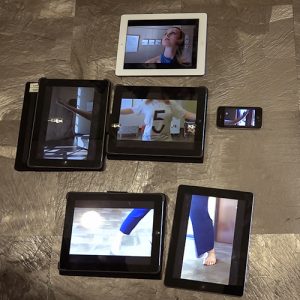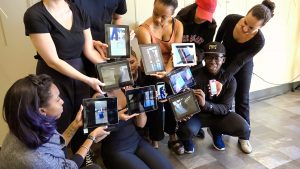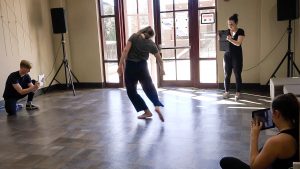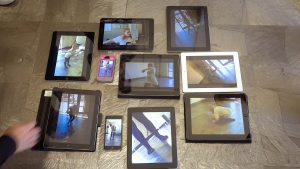by Rebecca Salzer, Department of Theatre and Dance
Dance has been a favorite subject of film since its invention. Thomas Edison, the Lumière Brothers, and George Méliès all used dance in their early film experiments. It was the perfect material for these early films; entertaining, beautiful, and also exemplary of the full potential of the “moving” picture. Film and dance continued to develop symbiotically, with dancers such as Fred Astaire and Gene Kelly demanding more from the camera, and experimental film pioneers such as Maya Deren and Shirley Clarke inspired by dance.
Dancers have also relied on film and then video as a means of preserving and transmitting an otherwise oral tradition. While notation systems for dance do exist, the systems that record contemporary movement are complex enough to make them unwieldy. Think about how many variables you need to notate to accurately represent even a few seconds of dance: the position of every movable part of the body, that body’s pathway in space, the position of that body relative to all other moving bodies on stage, time/music, dynamics, dramatic intention, etc.
In the age of ubiquitous and easy digital recording, dance and video have a very tight relationship. Dance is recorded for publicity and for documentation. There is also a thriving dance film world, with dances choreographed specifically for the camera and shown festivals worldwide. My course, Dance for the Camera, is intended to give undergraduate dance majors the practical and compositional tools they need to navigate the digital side of today’s professional dance world.
One of my concerns when designing the course was that technology is developing faster than I can write a syllabus. Also, graduating students may not necessarily have access to high-end equipment. To address these issues, I decided to emphasize overarching precepts of film and video-making while allowing students to experiment with these ideas in a variety of situations and using a variety of recording devices. When Ruth Pionke and the eTech staff agreed to arrange long-term loans of iPad 3s to my students, they opened up a whole world of possibilities.
Each student in Dance and the Camera is issued an iPad for the entire term. This allows them to have a high-quality means of recording in their backpack at all times. While students also receive training on Canon Vixias available through the Sanford Media Center, the iPads allow them to shoot a quick study or capture an idea in the moment — without having to check out a camera in advance. While most students have this ability with their smartphones, the iPad’s larger viewfinder allows students to work more precisely and allows me to look over their shoulders and guide them during a shoot. I have also been able to outfit eTech’s iPad 3’s with cases that allow lens and tripod attachments.
Last March my Dance and the Camera class participated in a sound and movement installation in the Ferg Gallery organized by New College faculty member Andrew Dewar and my Theatre and Dance colleague Sarah Barry. Using our iPads, we experimented with different ways to contribute our own instant video installation to the event. Above are illustrations of students in action with their iPads, including a looped video wall we made with multiple angles of the same dance played back on a wall of iPads and phones, and something we called “Frankendancer,” in which each camera person focused on a different body part, and then we assembled a whole dancer by putting together our different devices.



